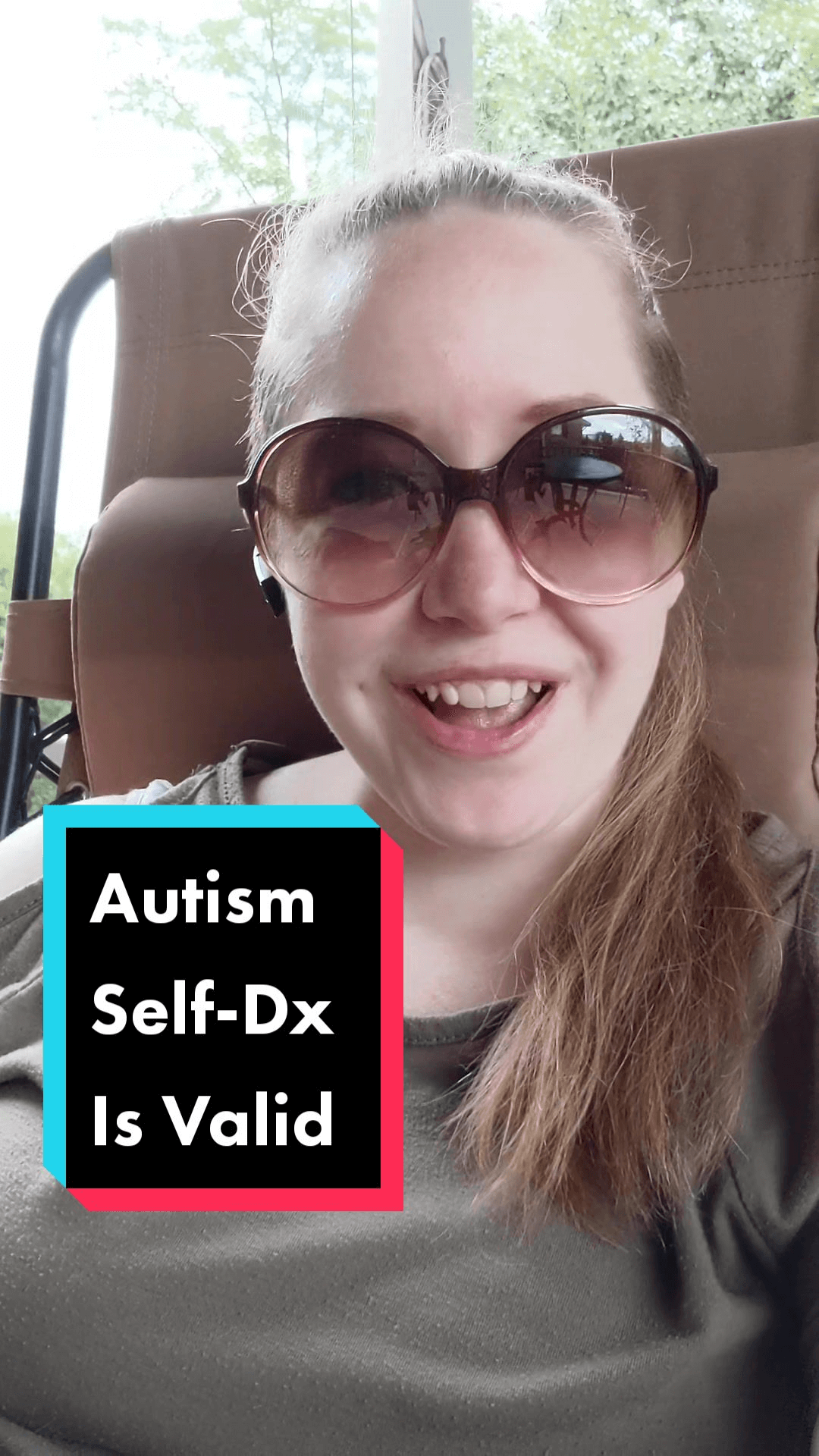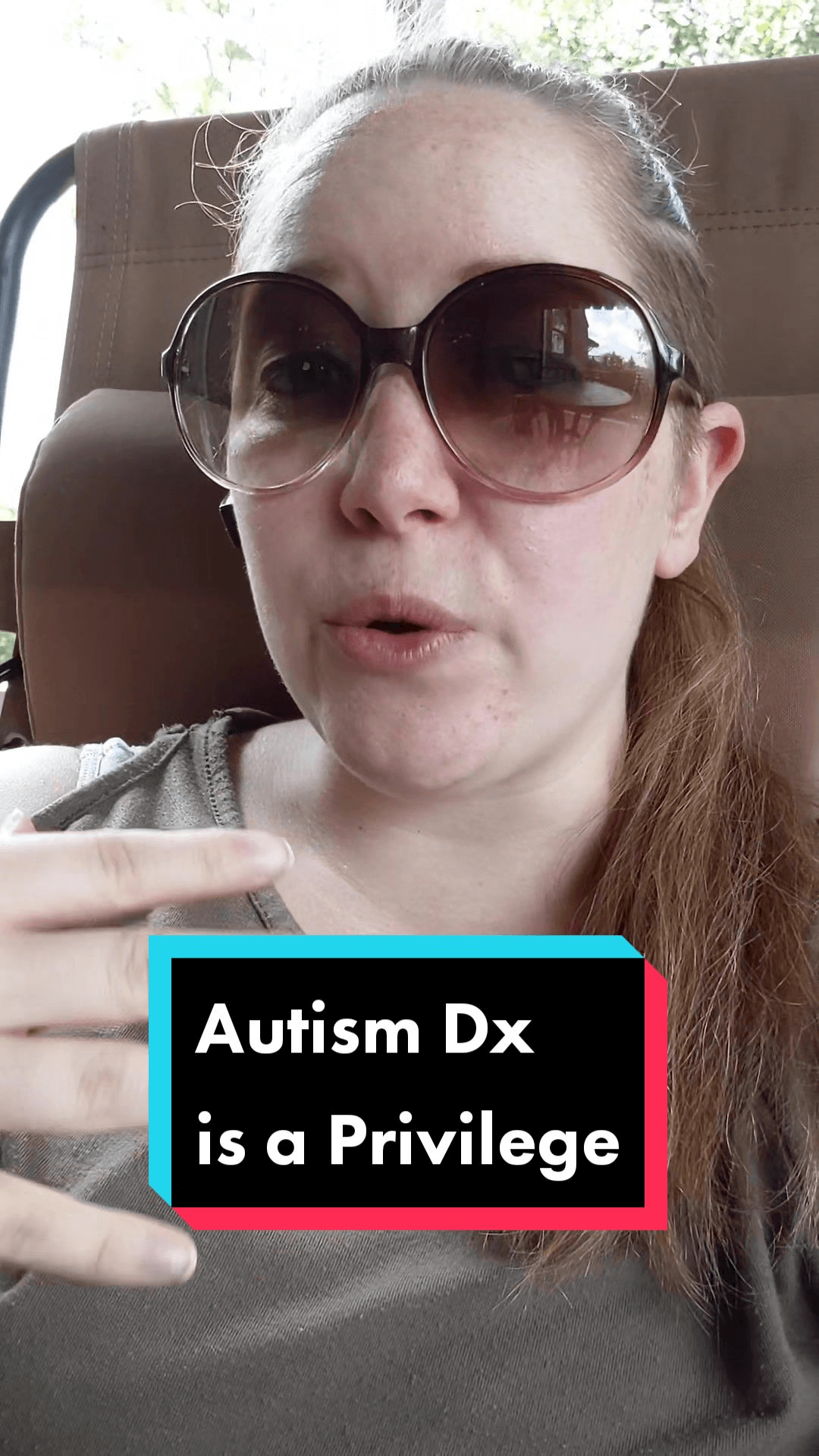This is a series of three (3) TikTok videos where I talk through the privilege of receiving a clinical autism diagnosis and why self-diagnosis is valid. If you are questioning whether you or a loved one may be autistic, check out the Autism Self-Diagnosis Guide I created using the diagnostic criteria from the DSM-5.
1. Self-Diagnosis is Valid

Transcript: Self-diagnosis is valid. As somebody who trusts professionals, experts, this might seem counterintuitive. In many cases when you’re experiencing some kind of medical situation, perhaps you find a lump somewhere in your body, the general average person has no idea on how to go about diagnosing that lump to figure out what it is.
But one of the key differences is that the medical community is not up-to-date on diagnosing autism. The science done on autism is mostly founded in young, white boys in distress. If you’re not white, if you’re not young, if you’re not a boy, and if you’re not in distress, you might not be diagnosed properly.
Even on an individual basis, doctors, psychologists, neurologists, psychiatrists, these people might just not be good at their job. They might not be familiar with what autism looks like and therefore it leads to not receiving a proper diagnosis.
So when somebody goes in to get this diagnosis and they are completely dismissed, that feels really invalidating.
2. Clinical Diagnosis is a Privilege

Transcript: You’re even privileged if you make it to that point because there’s a lot of hurdles that prevent people from even receiving a diagnosis. You need to be able to have the finances to pay for an evaluation or you might need to have insurance. And even if you have insurance, it might not cover it so you probably still have to pay out of pocket anyway.
Your access, your distance from a testing facility, if you don’t drive, if it’s not along a public bus route, that’s going to cost money to get there whether it be gas money, bus money, train money, Uber or Lyft money.
But also the time. If you have a job, you’re going to probably have to take time during the workday to do this or if you work at night and you’re probably going to have to take time out of your sleep schedule to go do this.
If you have children, you’re going to have to find child care; for people to watch your kids while you go do this.
3. Autism Evaluation Document Types

Transcript: If you managed to jump all of those hurdles to get to the diagnosis and then you actually receive a diagnosis, that diagnosis, that little piece of paper, is not equivalent everywhere.
For example, the diagnosis that I received, I can’t use it in court. I can’t use it to make my employer provide accommodations. It’s essentially just a medical document that I can just include on medical paperwork. It’s not going to help me in a disability case. It’s not going to help me advocate for disability rights. I’m not legally disabled.
If I want to be considered legally disabled, I have to pay for a different evaluation to get a different piece of paper [an Independent Medical Evaluation (IME) is a separate document that can be used in disability or compensation seeking proceedings and is often not covered by insurance]. I’m only medically disabled. That’s it.
And my diagnosis is only a “diagnostic impression” meaning it’s a working diagnosis. They haven’t ruled it out, but they’re not actually 100% sure. And why aren’t they 100% sure? Beats me, I’m not a doctor.
